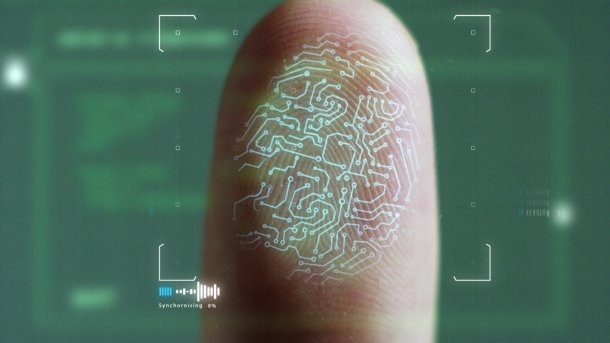US court approves forced fingerprint to unlock smartphone
In the USA, police officers tracked down a drug dealer by forcing him to put his finger on his smartphone.

A US court has ruled that the police can force users to unlock their smartphones with their fingerprints.
(Bild: Kitreel/Shutterstock.com)
Police officers in the USA are allowed to grab a suspect's finger and use it to unlock their smartphone in order to secure evidence. A federal appeals court in California has now dismissed a man's appeal at second instance. Police officers checked him during a traffic stop, but only found out from his smartphone that he was involved in drug dealing.
In his lawsuit, the man invoked the Fifth Amendment to the US Constitution, according to which US citizens do not have to incriminate themselves against law enforcement officers. However, the appeal judges took a different view: giving a fingerprint to unlock a smartphone was not a cognitive effort. After all, the device could also have been unlocked with the fingerprint if the man had been unconscious. Thus, the constitutional amendment did not apply. Instead, unlocking by fingerprint is comparable to taking a blood sample or fingerprints for the purpose of preserving evidence.
Similar ruling in Germany
An additional complicating factor in the man's case was that he was on probation at the time he was apprehended by the police. These stipulated that he had to hand over all electronic devices, keys and codes on request. However, he did not want to give the police officers the code to his smartphone, whereupon one of the officers made him place his thumb on the device's fingerprint sensor.
There are also similar rulings in German case law. In 2023, the Ravensburg Regional Court also approved a fingerprint enforced by the police to unlock a suspect's smartphone.
Quickly lock with a clamp grip
As is currently the case in the USA, there was then a discussion about whether unlocking by biometrics should be deactivated by smartphone owners to prevent the authorities from accessing private data. However, on some devices, such as the iPhone, it is also possible to temporarily deactivate biometric unlocking with a kind of clamp grip (simultaneously pressing the power button and one of the volume buttons for a few seconds) until the device code is entered again.
(mki)